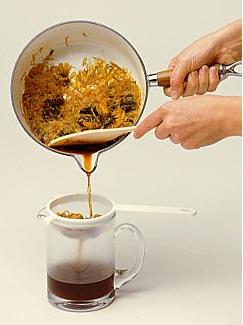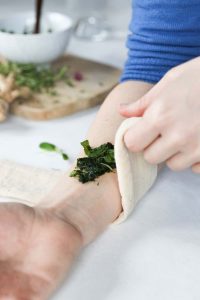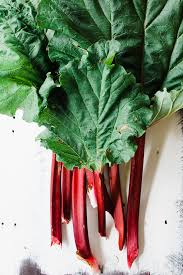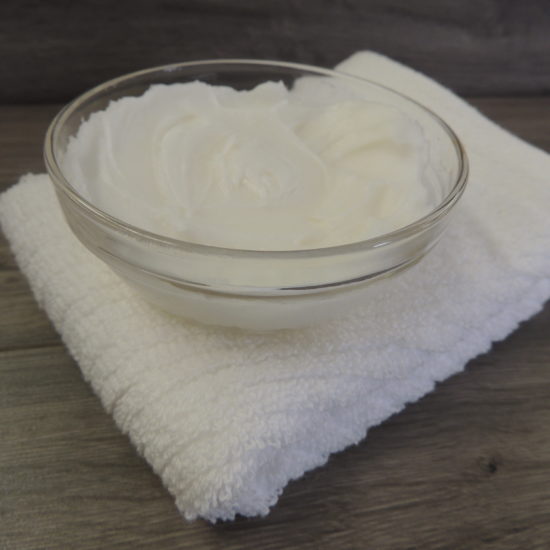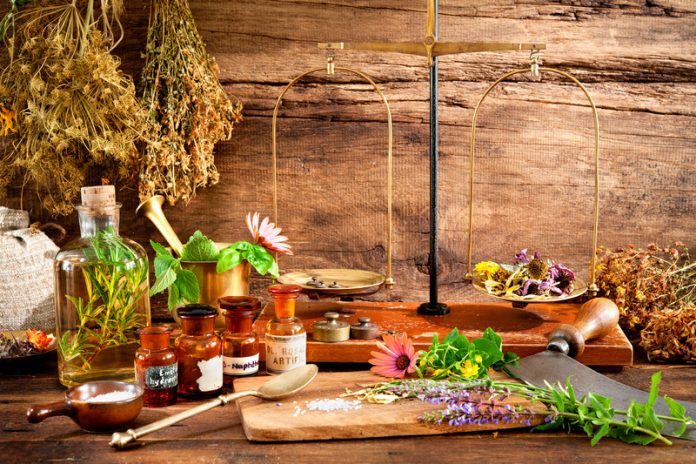
Modern medical marvels are uncovering new ways of treating illness every day, while at the same time losing the realistic, simple, and inexpensive ways our ancestors used to stay healthy. The ancients may have just had to look for some remedies as far as the spice cabinet, and that information has now been lost to history.
All of these remedies were once used by our ancestors to treat common illnesses, and they would have been well known to the population.
- Decoction is the technical term for a type of medicine made by boiling plant material to extract and concentrate its medicinal constituents.
Decoction Today we make gentle teas in convenient bags, but historically medicinal plants, roots, and barks were often boiled whole in a pot and cooked down into a concentrated decoction.
- Cayenne Pepper was used topically to treat pain and arthritis. A simple capsaicin salve can block pain receptors and dramatically reduce pain on the spot. Peppers were also taken internally to help digestion, warm the body and speed the metabolism.
- Willow Bark has gone by the wayside as a natural pain reliever with the advent of synthetics, but some modern pain relievers are still made with the same active ingredients naturally present in willow bark. Our ancestors chewed the bark or boiled it into a tea to ease pains of all sorts.
- Oxymels are a remedy that dates back to ancient Roman times. A mixture of herbs, raw vinegar, and honey was used to treat a variety of ailments depending on the herbs used. Elderberry oxymels, for example, are potent immune boosters. When herbs like cherry bark are used, an oxymel can be potent homemade cough syrup.
- Raw Vinegar is naturally probiotic and helps to correct digestive troubles by balancing the body’s pH level. In its raw form, it’s a potent probiotic that contains millions of active microbes to promote health and healing throughout the body. Most preparations these days are pasteurized, but if you’re looking for medicine make sure you seek out the raw stuff.
- Turmeric is a powerful anti-inflammatory, and research has shown that it can be just as effective at treating inflammatory pain as ibuprofen. Fresh turmeric is a rhizome, similar to ginger, that is grated into foods. More commonly known, ground turmeric is generally available in just about every grocery store spice section.
- Black Pepper is great for topical pain relief in much the same way that cayenne pepper is used. Make a salve by infusing the oil with black pepper and apply directly or convert it to a healing salve by adding beeswax. Black pepper is also antibacterial, which is one reason it was so commonly used in recipes for salt-preserved meats historically.
- Chamomile tea tastes great, but it’s also powerful medicine. It was used by Native Americans as a sedative when drunk as tea, but it’s also used in healing salves for skin irritation. Chamomile hair rinses are also great for conditioning hair and treating scalp issues.
- Honey was taken by the spoonful for immune support, but it was also used topically to heal wounds. A bit of honey spread on a healing wound helped prevent infection. The high sugar content in the absence of water prevents microbes from growing in much the same way that salting meats prevent spoilage. Honey is also naturally antimicrobial due to enzymes made by the bees, so it works in two ways.
- Garlic is antibacterial and antifungal. It’s used in oil extractions to treat all sorts of issues, including ear infections. Eating garlic raw helps with lung issues and promotes good circulation. Eating fresh garlic also helps prevent bug bites because the sulfur compounds that give garlic its taste are processed by your body and emitted through your skin.
- Ginger helps support the immune system and promotes good circulation. It was used historically for stomach issues, and while crystallized ginger is eaten as candy today, it was once taken as medicine for nausea, seasickness, and morning sickness.
- Poultice is a word you’ll see in ancient herbal texts, but not one you’ll find prescribed by a doctor today.
A herbal poultice To make one, mash or chew up fresh herb material and apply it topically. They’re used for all sorts of issues from minor skin irritations to chest colds when applied directly to the chest. A poultice is an ancient way to prepare herbs, and its impact depends on the herbs used.
- Bay Leaves are added for flavor to soups and stews these days, but historically they were used to detoxify the body and manage bacterial infections. Smoke from the burning bay was used to clear and focus the mind.
- Yarrow is also known by the Latin name “achillea” for the ancient Greek hero Achilles. He was said to have carried it to treat wounds from his soldiers. It’s a powerful medicinal that stops bleeding quickly when applied as a poultice directly to the wound.
- Infused Oils are used to extract and preserve the medical properties of herbs for both topical and internal use. Some infused oils, like calendula or plantain, are used for external applications to treat skin issues, while others like the rosemary oil you’ll find in the supermarket, were once used to treat nausea and stomach issues when consumed. While they’re used as flavorings now, they were once well-known medicine.
- Pine Pitch is easily extracted from pine trees and it was used historically for extracting splinters and poisons. A “drawing salve” would have been made and applied, using pine pitch, to draw out a splinter or snake bite venom.
- Aloe Vera was applied directly to wounds on battlefields historically, but it was also consumed. The gel within the plant leaves is consumed to help improve digestion, reduce inflammation and treat constipation.
- Cloves are perfect for topical pain relief, and before dentists were commonly available to people, cloves would have been used to treat tooth pain. A cavity would have been packed with ground cloves to numb the pain, or whole cloves would be chewed.
- Burdock is a garden weed these days, but it’s also a powerful blood detoxifier and diuretic. Patients would be prescribed a burdock root tincture, tea or told to simply eat burdock root as a boiled vegetable in much the same way carrots are consumed.
- Red Raspberry Leaf is rich in minerals that help keep just about everyone healthy and well-nourished, but it’s particularly potent for pregnant women. Red raspberry leaf tea was drunk by pregnant women to promote easy labor and help tone the uterus.
- Plantain was so well known for its ability to treat skin ailments, that it’s used as a joke in Romeo and Juliet. The entire audience would know that when they’re discussing plantain, it was to be used to treat skin wounds in much the same way that a modern audience would know what was meant if you said “band-aid.” Plantain was the band-aid of the day in Shakespearean times.
- Medicinal Beer isn’t something you’ll find at your local liquor store these days, but historically, herbs were brewed into beer where the alcohol helped extract and preserve the medicinal properties.
- Cranberry is mostly served for holiday meals these days, but historically it was used to treat all sorts of urinary tract health issues. It’s naturally antibacterial, and consuming cranberries help to purge infection from the body.
- Maple Sap is tasty when cooked into maple syrup, but our ancestors drank the sap straight to help strengthen their bones and for cleansing. A group would get together in a heated room and each person would try to drink as much as 5 gallons of the sap while sweating profusely from the heat. The idea was to bring the medicinal benefits of the sap in while sweating the toxins out.
Rhubarb - Rhubarb is mostly made into pie these days, but the Romans used rhubarb for gas, convulsions, stomach issues, asthma and dysentery. Web MD even verifies this, saying rhubarb is useful for digestive complaints. It wasn’t even used as food until the 1830s, but when’s the last time you ate rhubarb for medicine?
- Herbal Smoking isn’t something hear about these days. When someone smokes, it’s assumed it’s tobacco. Historically, all manner of herbs were smoked for their medicinal benefits. The smoke is inhaled and the medicine can be absorbed directly by the capillaries in the lungs.


